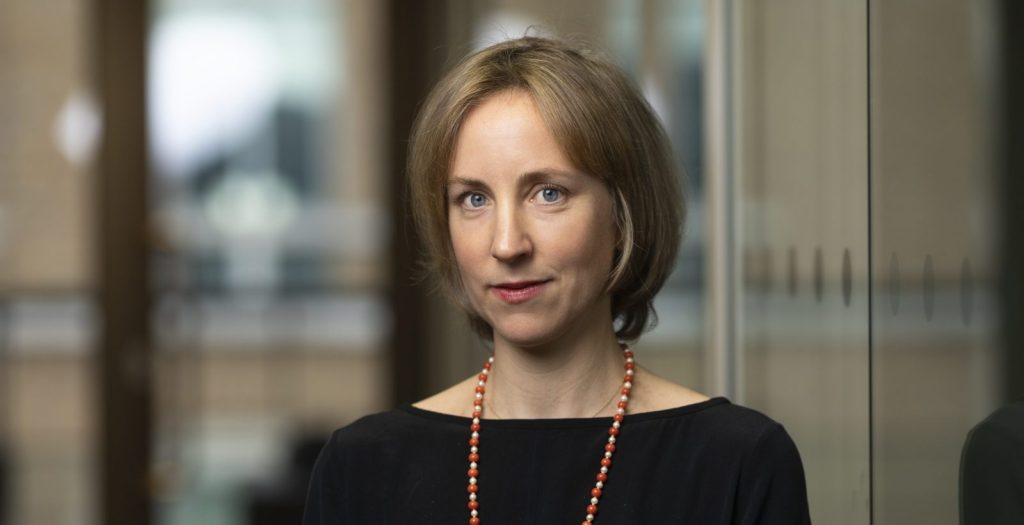What’s in store for European fintech in 2023? The experts give their predictions
After a record year of fundraising and growth in 2021, many European fintechs were forced to hit the brakes in 2022.
As access to new investment dried up, the sector saw some decline biggest layoffs, the first downs and first insolvency in European technology.
Heading into 2023, industry watchers expect even more of the same. As the technology sector closest to financial markets, a slowdown in economic growth will have a direct impact on fintech revenues. But some business models will be more exposed than others.
To find out who might sink or swim, Sifted asked the experts for their predictions for the year ahead.
Here’s what they had to say.
2023 will be the year of insurtech

It’s tempting to look at public markets and try to find what’s recession-proof. There are always good arguments for a demonstrable improvement in the way things are done, and there are still very strong inefficiencies in financial services.
Insurtech is a particularly “recession-proof” sector. Often there are mandatory products. The IPOs of 2020 took the shine off insurtech a bit, because most are trading significantly below their IPO prices, so investors have been a bit choppy in that area.
But risk management tends to be something that consumers (both corporate and retail) pay attention to in a down market.
— Ruth Foxe Blader, partner at Anthemis
… and other fintechs that manage risk
It feels like we can continue to expect material FX [foreign exchange] volatility due to economic and political actions next year. I expect many of the fintechs that solve currency risk for small and large companies to have fantastic years through 2023 as they continue to solve an acute pain that most businesses involved in international trade are experiencing.
— Nick Sando, principal at Octopus Ventures
CFO tools will show their ability
2023 is not going to be easy. Public market valuations are unlikely to return to 2021 levels anytime soon, and VC funding will match the dynamics of public markets, especially at post [Series]-A stages.
That means there is definitely more focus on the fundamentals of a business (unit economics, ultimate path to profitability) as well as the runway. Cash is king, and many cash management and forecasting tools and CFO tools has yet to gain serious scalable traction and adoption.
There have been several companies that made great rounds in 2021-22, but none of them have yet become “the must use” for CFOs. We will see who wins bigger market shares and wins the market. I don’t expect new seed companies to emerge, as there were several last year, but now we’ll see who wins.
— Olga Shikhantsova, partner at SpeedInvest
2023 will be a turning point for climate fintech
2023 is shaping up to be a very interesting year for climate regulation, as the Fit for 55 package (the EU’s legally binding commitment to reduce emissions by 55% by 2030) puts pressure on regulators.
The package includes proposals to reform high-profile schemes such as the cap-and-trade scheme, as well as to crack down on carbon leakage through the offshoring of carbon-intensive activities. These reforms will continue to pave the way for one of those most exciting opportunities in the fintech investment area.
— Nick Sando, principal at Octopus Ventures

Perhaps 2023 is the year we will start to see real businesses being built at the intersection of financial services and sustainability. Up until now, we’ve been a bit underwhelmed by this space, but it feels like 2023 could be the breakthrough year, and perhaps in ways that are different than where funding has gone so far. So, less about analyzes and ESG reporting, and more about how sustainability is rooted in people’s lifestyles, from consumption to property or mobility.
— Manuel Silva Martínez, general partner at Mouro Capital
Big banks want more money to acquire fintechs
Banks will see profits rise in the face of higher interest rates, and come out of this recession stronger than how they fared in 2008.
If price-to-book ratios improve for legacy banks, they are likely to start thinking more proactively about acquisitions. Banks that already have higher valuation ratios – like some of the big US banks – will already be active, and we’ll see them make more acquisitions in 2023.
Banks will be most interested in buying up companies that are in the banking area, especially to increase the product offering and product capacity.
When banks want to buy each other, they usually think about expanding their footprint or customer base, but in case they want to buy fintech, they may be more interested in innovative products with a proven market fit that they can connect to their current portfolio of products. These products can range from more niche apps for consumers to lending products aimed at small and medium-sized businesses that have found an innovative way to ingest data and thus guarantee companies better – the spectrum is quite broad!
Eventually, it wouldn’t be surprising to see an acquisition or two by neobanks – and conversely, some well-funded neobanks buying a smaller bank.
— Yusuf Özdalga, partner at QED Investors
Fintech mergers and acquisitions (M&A) will take off
I think all fintech sectors will see M&A activity increase: Payments; asset management; lending; and neobanks, just to name a few. The dynamics that drive M&A apply broadly – and while there are nuances across sub-sectors, the overarching theme of M&A will be constant.
— Yusuf Özdalga, partner at QED Investors
In 2023, I think you can see a good deal of consolidation and some administration in the bank-as-a-service [BaaS] vertical. In 2021, a lot of funding was given to the BaaS category. Many of the BaaS providers have customer bases heavily skewed towards very early-stage fintechs, some of which are likely to continue to find it difficult to operate and scale in 2023.
This will likely lead to increased churn and a drop in revenue per customer for some of the BaaS providers. However, many BaaS fintechs made it clear that they wanted to differentiate themselves away from early fintech and into other industries such as healthcare and travel, and these companies should emerge stronger provided they stick to their strategy.
— Nick Sando, principal at Octopus Ventures
Crypto will not recover overnight
“Crypto and DeFi [decentralised finance] is clearly off to a bad start, and it won’t get any easier overnight. Basically, digital assets have yet to show their huge potential in creating more liquid and fair capital markets and making payments cheaper and faster.
DeFi has yet to find the product market that fits more specific use cases. More regulations are to follow, creating an opportunity for all compliance-first crypto solutions. This will also create a framework for the incumbents to feel more comfortable in the space, and take another step towards wider adoption.
— Olga Shikhantsova, partner at SpeedInvest
The crypto meltdown of 2022, with the FTX collapse being the most recent, will likely mark the end of an era of unregulated crypto markets. What comes next is increased regulatory scrutiny, acceleration of regulatory frameworks around the world and growing demand for compliance solutions across the traditional financial and crypto sectors.
— Magda Posluszny, senior assistant at Lakestar
The fintech operator’s founder flywheel will continue
I expect to see many new ideas emerging in the early stages (pre-seed and seed), as a result of the perfect storm of tons of fintech talent being laid off from otherwise large companies, and the recent overfunding of fintech hyped space that should push these new founding teams to really think hard about new problems in the space.
Expect a lot in payments, data orchestration, security and identity, consumption facilitation – and perhaps less in retail lending and management.
— Manuel Silva Martínez, general partner at Mouro Capital
Amy O’Brien is Sifted’s fintech reporter. She tweets from @Amy_EOBrien and writes our fintech newsletter — You can register here.


